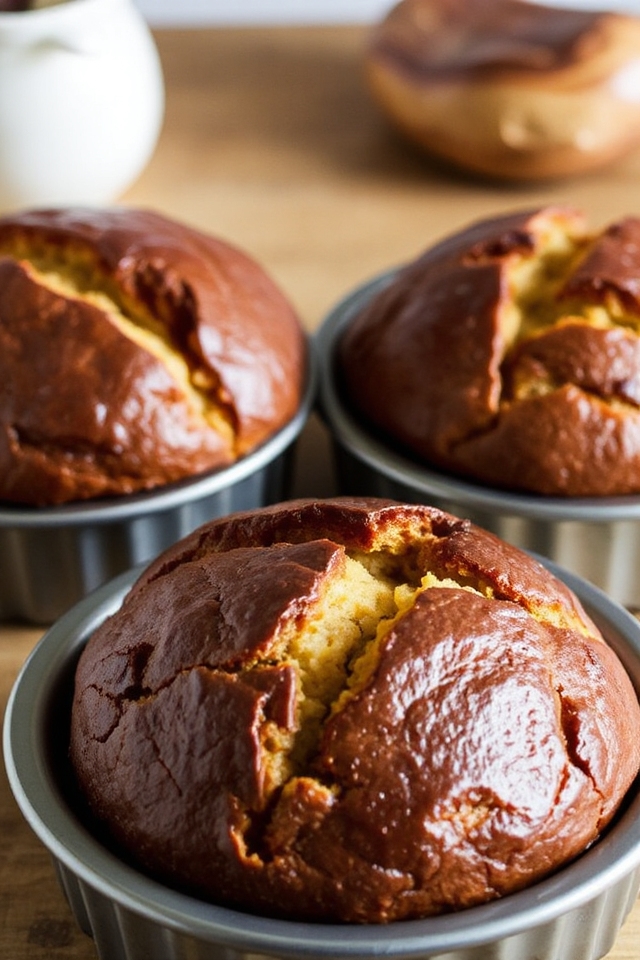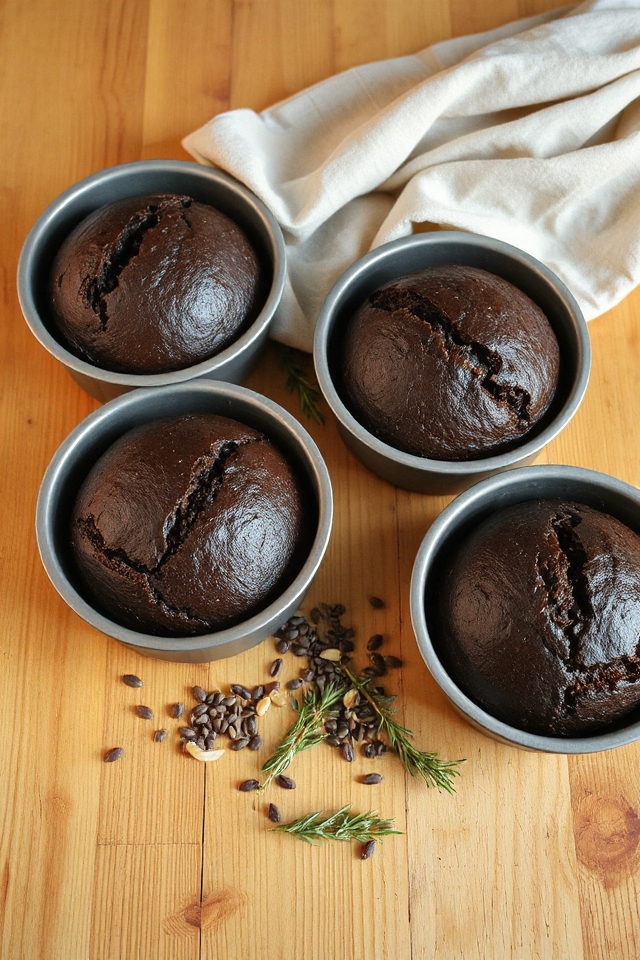Why You’ll Love This Pumpernickel Bread Recipe
If you’re looking to elevate your bread game, you’ll absolutely love this pumpernickel bread recipe. The deep, rich flavor of pumpernickel is unlike any other bread, and once you try it, you’ll crave it.
It’s hearty, perfect for sandwiches or simply slathered with butter. Plus, the unique combination of rye flour and molasses adds a delightful sweetness that balances perfectly with savory toppings.
The texture is dense yet soft, making it incredibly satisfying. I love how it pairs with everything from smoked salmon to sharp cheeses.
Trust me, baking this bread will impress your family and friends—and you’ll enjoy every bite!
Ingredients of Pumpernickel Bread
When it comes to baking pumpernickel bread, the right ingredients are key to achieving that rich, delicious flavor we all love. It’s like opening a secret door to a world of hearty goodness. You’ll find that this recipe calls for a mix of both all-purpose and rye flours, which gives the bread its distinctive texture.
Plus, the addition of molasses and unsweetened chocolate creates a depth of flavor that’s just heavenly. And let’s not forget the mashed potatoes—yes, you read that right. They help keep the bread moist and tender.
So, if you’re ready to roll up your sleeves and plunge into the world of pumpernickel bread, here’s what you’ll need:
- 9 cups all-purpose flour
- 3 cups rye flour
- 2 tablespoons salt
- 1 cup 100% all-bran cereal
- 1/4 cup yellow cornmeal
- 2 (1/4 ounce) packages active dry yeast
- 3 1/2 cups water
- 1/4 cup dark molasses
- 2 ounces unsweetened chocolate
- 1 tablespoon butter
- 2 cups unseasoned mashed potatoes, at room temperature
- 2 teaspoons caraway seeds (optional)
Now, let’s talk about these ingredients a bit more. The combination of all-purpose flour and rye flour is what makes this bread special. The rye flour gives it that classic pumpernickel taste, while the all-purpose flour provides structure.
And if you’re wondering about the cereal and cornmeal, they add a bit of crunch and flavor, which is such a nice touch. As for the unsweetened chocolate, it sounds a little odd, but it works wonders in creating that deep color and flavor.
So, if you can’t find unsweetened chocolate, don’t panic. Just make sure to adjust the sweetness a bit if you swap it with something else. And remember, if you’re not a fan of caraway seeds, feel free to leave them out. The bread will still be fantastic.
How to Make Pumpernickel Bread

Making pumpernickel bread is a bit like starting a delicious adventure. First up, you’ll want to gather all your ingredients—trust me, it makes life a lot easier. You’ll need 9 cups of all-purpose flour mixed with 3 cups of rye flour, which gives this bread its unique flavor.
Then, in a very large bowl, combine 2 cups of that flour mixture with 2 tablespoons of salt, 1 cup of 100% all-bran cereal, and 1/4 cup of yellow cornmeal. This combination is where the magic begins, as it sets the stage for that hearty, rustic taste we all crave.
Now, let’s move on to the liquid gold that brings it all together: in a saucepan, mix 3 1/2 cups of water, 1/4 cup of dark molasses, 2 ounces of unsweetened chocolate, and 1 tablespoon of butter. Gently heat this mixture over low heat until it’s warm—about 120°-130°F—because you want those yeast packets to wake up and get to work.
Gradually add this warm mixture to your dry ingredients and beat it for a couple of minutes at medium speed. You’ll notice the dough start to come together, and at this point, toss in 2 cups of unseasoned mashed potatoes. Yes, mashed potatoes! They’re the secret weapon for keeping your bread moist and tender.
After mixing in the potatoes, it’s time to turn up the speed and beat the dough for another two minutes. Once your dough is looking good, turn it out onto a lightly floured board and stir in 2 teaspoons of caraway seeds if you’re using them.
Then, add enough additional flour mixture to make a soft dough. Knead it for about 15 minutes until it’s smooth and elastic—this is your workout for the day, so no skipping it! After kneading, place the dough in a greased bowl, cover it up, and let it rise in a warm spot until it’s doubled in size, which should take about an hour.
Punch it down (yes, you heard that right) and let it rise again for another 30 minutes. Then, it’s time for the final shaping. Divide the dough into three pieces, shape them into round balls, and place each in a greased cake pan. Cover them and let them rise once more until they’re fluffy and doubled.
Finally, bake those beauties at 350°F for about 50 minutes. When they’re done, let them cool on a wire rack, and get ready to enjoy some of the best pumpernickel bread you’ve ever tasted. It’s a labor of love, but oh, is it worth it.
Pumpernickel Bread Substitutions & Variations
After you’ve mastered the classic pumpernickel bread recipe, you might want to explore some substitutions and variations to suit your taste or dietary needs.
For a gluten-free option, try using a gluten-free all-purpose flour blend instead of regular flour.
If you’re looking to cut down on carbs, you can replace some of the flour with almond flour or coconut flour.
Want a sweeter touch? Add a bit of honey or maple syrup.
You can also experiment with different seeds, like sunflower or pumpkin, in place of caraway seeds for a unique flavor twist.
Enjoy the creativity!
Additional Tips & Notes
To guarantee your pumpernickel bread turns out perfectly, pay attention to the temperature of your ingredients. Warm water activates the yeast, while room-temperature potatoes blend smoothly into the dough.
I also recommend using a kitchen scale for accurate flour measurements—this can make a big difference in texture. If you’re a fan of a crustier loaf, try baking in a Dutch oven.
Finally, don’t rush the rising times; they’re essential for flavor development. Once baked, let your bread cool completely on a wire rack for the best texture. Enjoy your delicious homemade pumpernickel!
